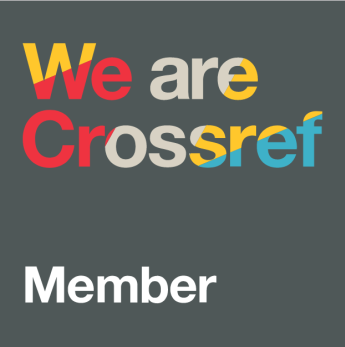Developing the teaching factory learning media in a public vocational high school
DOI:
https://doi.org/10.21831/jpv.v10i1.30222Keywords:
teaching factory, industrial learning, tutorial video learning media, video-based portfolio e-report skillAbstract
This study aims to determine the success factors of the learning media of tutorial and skill e-report portfolios video-based in teaching factory learning outcomes in vocational high school. This study was the Research and Development model, through several stages, namely: (1) collecting data; (2) planning; (3) developing draft; (4) conducting initial trials; (5) revising the trial results; (6) conducting trial site research; (7) improving the productivity of the test results, (8) conducting test, (9) completing the final product; and (10) disseminating and implementing the result. This study was conducted at 58 Public Vocational High School, Jakarta. The samples were random sampling, consisting of 59 students majoring in painting and visual communication design in the control class and the experimental class. The instrument was a multiple-choice test sheet (multiple choice) through pre-test and post-test. The results of the study were analyzed using a t-test. The t-test average of the experimental class, Visual Communication Design, was 11.522. The t-test average of the control class was 10.832. Thus, the average learning outcomes of the experimental class were 0.69, which is bigger than in the control class. In the experimental class, Painting Class, the average learning outcome was 67, and the control class was 54.5. Therefore, there was a difference of 12.5. The hypothesis stated that there were differences in teaching factory learning resulted from the pre-test and post-test experimental classes majoring in Painting and Visual Communication Design. The instructional media of Tutorials and Skill E-Report Portfolio Video-Based got very good responses from students.
References
Abele, E., Metternich, J., Tisch, M., Chryssolouris, G., Sihn, W., ElMaraghy, H., Hummel, V., & Ranz, F. (2015). Learning factories for research, education, and training. Procedia CIRP, 32(Clf), 1–6. https://doi.org/10.1016/j.procir.2015.02.187
Al Mamun, M. A. (2014). Effectiveness of audio-visual aids in language teaching in tertiary level [Doctoral thesis. BRAC University, Dhaka]. http://dspace.bracu.ac.bd/xmlui/handle/10361/3288
Azer, S. A. (2009). Interactions between students and tutor in problem-based learning: The significance of deep learning. The Kaohsiung Journal of Medical Sciences, 25(5), 240–249. https://doi.org/10.1016/S1607-551X(09)70068-3
Baena, F., Guarin, A., Mora, J., Sauza, J., & Retat, S. (2017). Learning factory: The path to industry 4.0. Procedia Manufacturing, 9, 73–80. https://doi.org/10.1016/j.promfg.2017.04.022
Chryssolouris, G., Mavrikios, D., & Rentzos, L. (2016). The teaching factory: A manufacturing education paradigm. Procedia CIRP, 57, 44–48. https://doi.org/10.1016/j.procir.2016.11.009
Comiskey, D., & McCartan, K. (2011). Video: An effective teaching aid? An architectural technologist's perspective. Transactions, 8(1), 25–40. https://doi.org/10.11120/tran.2011.08010025
Cvetkova, B., Andonovska-Trajkovska, D., & Atanasoska, T. (2010). Values of some strategies of teaching and learning in fine art education. Procedia - Social and Behavioral Sciences, 2(2), 2841–2845. https://doi.org/10.1016/j.sbspro.2010.03.425
Jaber, M. Y., Glock, C. H., & Zanoni, S. (2018). A learning curve with improvement in process quality. IFAC-PapersOnLine, 51(11), 681–685. https://doi.org/10.1016/j.ifacol.2018.08.397
Mavrikios, D., Georgoulias, K., & Chryssolouris, G. (2018). The teaching factory paradigm: Developments and outlook. Procedia Manufacturing, 23(2017), 1–6. https://doi.org/10.1016/j.promfg.2018.04.029
Mavrikios, D., Georgoulias, K., & Chryssolouris, G. (2019). The teaching factory network: A new collaborative paradigm for manufacturing education. Procedia Manufacturing, 31, 398–403. https://doi.org/10.1016/j.promfg.2019.03.062
Mourtzis, D., Zogopoulos, V., & Vlachou, E. (2018). Augmented reality supported product design towards industry 4.0: A teaching factory paradigm. Procedia Manufacturing, 23(2017), 207–212. https://doi.org/10.1016/j.promfg.2018.04.018
Prinz, C., Morlock, F., Freith, S., Kreggenfeld, N., Kreimeier, D., & Kuhlenkí¶tter, B. (2016). Learning factory modules for smart factories in industrie 4.0. Procedia CIRP, 54, 113–118. https://doi.org/10.1016/j.procir.2016.05.105
Reisinger, G., Trautner, T., Hennig, M., Alexandra, G. R., Mazak, T., Hold, P., Gerhard, D., & Mazak, A. (2019). TU Wien pilot factory industry 4.0. Procedia Manufacturing, 31, 200–205. https://doi.org/10.1016/j.promfg.2019.03.032
Rentzos, L., Doukas, M., Mavrikios, D., Mourtzis, D., & Chryssolouris, G. (2014). Integrating manufacturing education with industrial practice using teaching factory paradigm: A construction equipment application. Procedia CIRP, 17, 189–194. https://doi.org/10.1016/j.procir.2014.01.126
Sadiman, A. S., Rahardjo, R., Haryono, A., & Rahardjito, R. (2007). Media pendidikan: Pengertian, pengembangan dan pemanfaatannya. Raja Grafindo Persada.
Stavropoulos, P., Bikas, H., & Mourtzis, D. (2018). Collaborative machine tool design: The teaching factory paradigm. Procedia Manufacturing, 23(2017), 123–128. https://doi.org/10.1016/j.promfg.2018.04.004
Stojkić, Ž., & BoÅ¡njak, I. (2019). Development of learning factory at FSRE, University of Mostar. Procedia Manufacturing, 31, 180–186. https://doi.org/10.1016/j.promfg.2019.03.029
Sugiyono, S. (2009). Metode penelitian pendidikan pendekatan kuantitatif, kualitatif, dan R&D. Alfabeta.
Summak, M. S., Samancio, M., & Ba, M. (2010). Technology integration and assesment in educational settings. Procedia - Social and Behavioral Sciences, 2(2), 1725–1729. https://doi.org/10.1016/j.sbspro.2010.03.973
Tvenge, N., & Ogorodnyk, O. (2018). Development of evaluation tools for learning factories in manufacturing education. Procedia Manufacturing, 23, 33–38. https://doi.org/10.1016/j.promfg.2018.03.157
Wahjusaputri, S., Fitriani, S., & Syarif, S. (2019). Canvas model business as an innovation of teaching factory learning in the dashion department of 27 Public Vocational High School, Jakarta. Dinamika Pendidikan, 14(2), 142–154. https://doi.org/10.15294/dp.v14i2.21167
Downloads
Published
How to Cite
Issue
Section
License
The authors submitting a manuscript to this journal agree that, if accepted for publication, copyright publishing of the submission shall be assigned to Jurnal Pendidikan Vokasi. However, even though the journal asks for a copyright transfer, the authors retain (or are granted back) significant scholarly rights.
The copyright transfer agreement form can be downloaded here: [JPV Copyright Transfer Agreement Form]
The copyright form should be signed originally and sent to the Editorial Office through email to jpvokasi@uny.ac.id
Jurnal Pendidikan Vokasi by http://journal.uny.ac.id/index.php/jpv is licensed under a Creative Commons Attribution-ShareAlike 4.0 International License.














